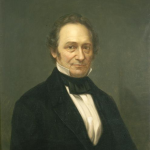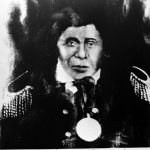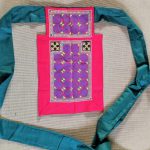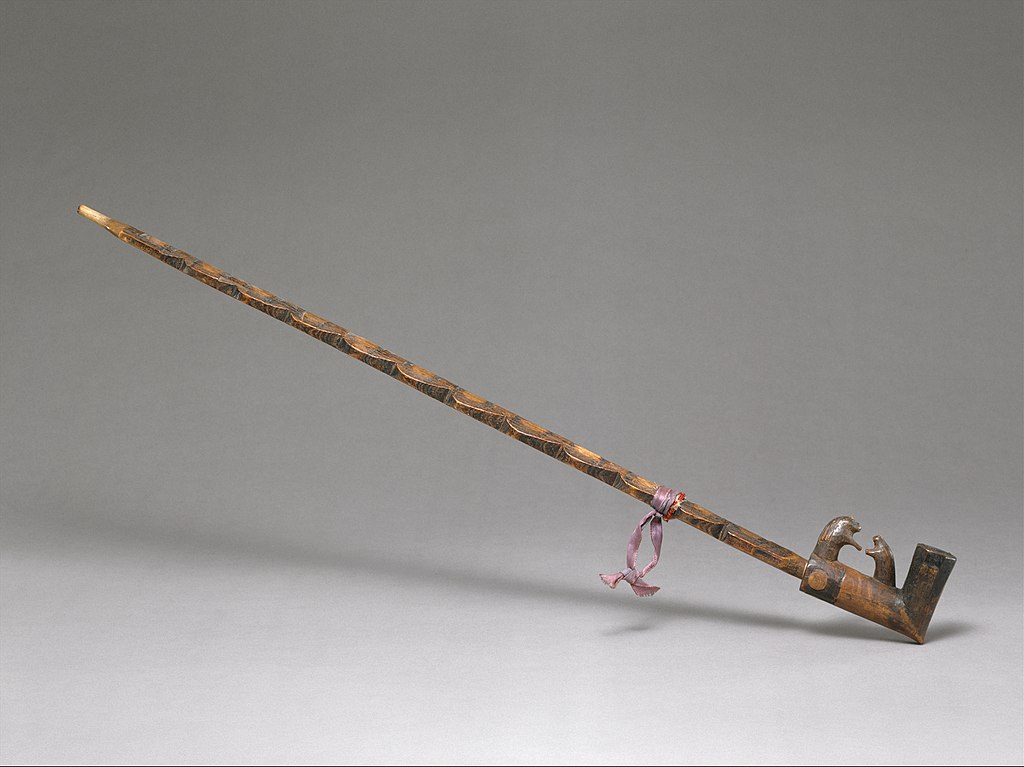
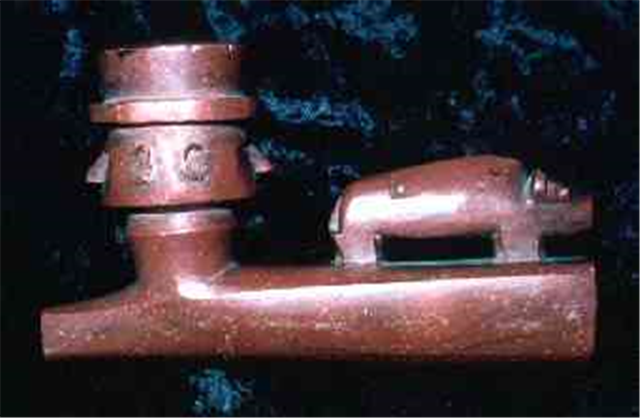
This Ojibwe presentation pipe consists of two pieces: a pipe bowl and a pipe stem. It was most likely for spiritual ceremonies. According to the Wisconsin Historical Society, the pipe bowl is carved from heavy stone, and has two common images to Native American art works: the Janus head, which is two heads facing back to back, and a small buffalo figure[1].

The pipe stem is made of carved wood, and ornately decorated with dyed porcupine quills, horsehair, and woodpecker feathers, but the colors have faded over time. In function, these two pieces would snap together, and a substance such as tobacco would be placed in the bowl end, lit, and ceremoniously smoked from the long stem.
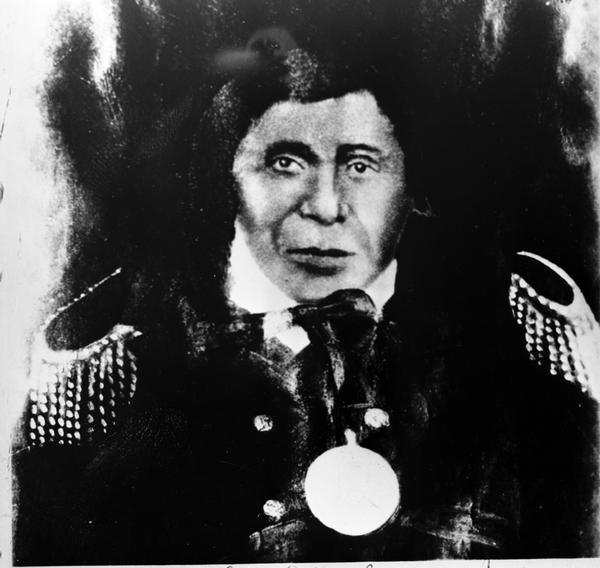
The Ojibwe tribe from what is now Madeline Island were a very spiritually connected people[2]. Led by Chief Buffalo (Kechewaishke), the Ojibwe people of this tribe gifted this pipe to Wisconsin Territorial Governor James Duane Doty in 1842. The tradition of gifting items as a sign of friendship was a common practice found throughout many North American tribes. The decision to gift this pipe may have been a way for this Ojibwe tribe to show thanks to Doty for his role as a mediator between Native Americans of Wisconsin, and the United States Government, acting as a figurehead for the white settlers beginning to flock to the Wisconsin Territory in the early-mid 19th century.
The main takeaway one can gather from this object’s history is a reminder about the different cultural landscape of the people who lived in Wisconsin before Euro-American settlers took over, and an acknowledgement of how Native Americans in this time period were trying to coexist and share their culture with the new white settlers of this land.
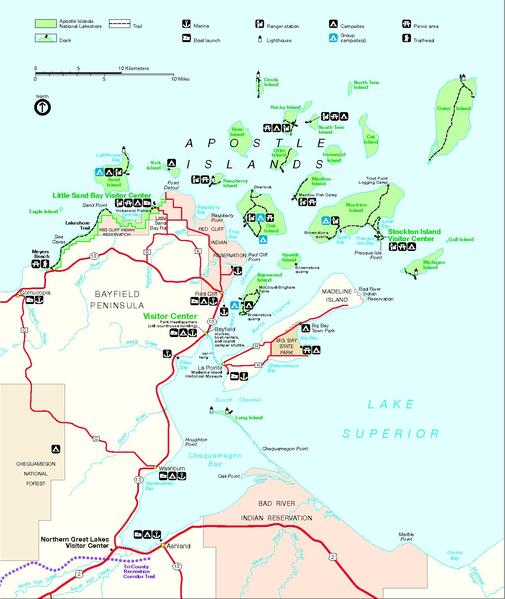
Learn more about Madeline Island’s history:
Written by Trase Tracanna, November 2020.
FOOTNOTES
[1] D Z, “Ojibwe Presentation Pipe,” Wisconsin Historical Society, February 11, 2005, https://www.wisconsinhistory.org/Records/Article/CS2810.
[2] “Madeline Island,” Bayfield (Bayfield Chamber and Visitor Bureau, 2020), https://bayfield.org/what-to-do/madeline-island/.
